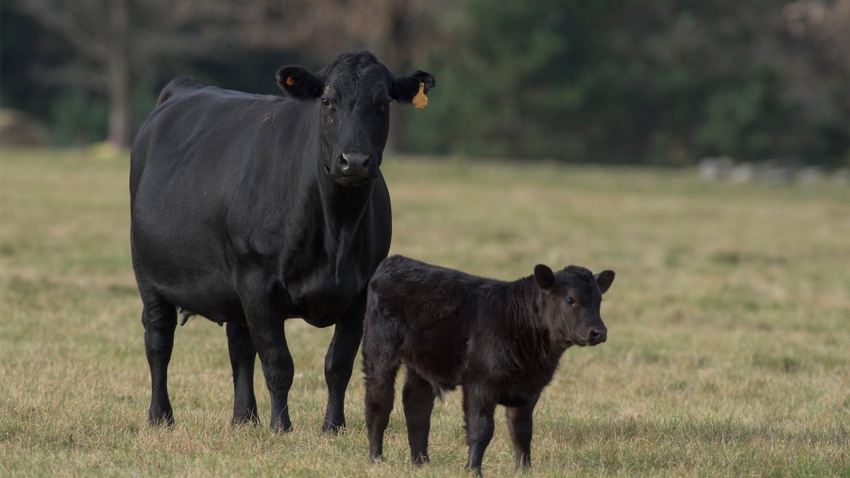
The drought, high input costs and high cull-cow values has put many cattle producers in the Plains states in a tough spot the past three years. The U.S. culled 13.3% of the national herd in 2022, according to USDA. That makes for the smallest U.S. beef cow herd since 1962.
But if cattle producers are in a position to rebuild their herds, Angus Genetics Inc. wants them to consider the Angus breed.
It takes time and money to build a cow herd and develop heifers. By making sure your heifers and cows carry the genetics that will decrease their risk of early culling, commercial cattle producers can set themselves up for success when times get tough.
AGI, a subsidiary of the American Angus Association, has been working on several tools that can help producers use the best of Angus maternal traits for their herds.
Kelli Retallick, president of AGI, says the ideal cow is matched for the environment, docile, and with a sound structure to perform well in the pasture. But most importantly, that cow needs to be fertile. AGI is working on a heifer pregnancy tool that will help cattle producers select for females to return to the herd as yearlings, ready to carry a calf — and ensure she brings value to earn her place in the pasture.
“An open cow really doesn’t help us with our bottom line,” Retallick says. “And so, that’s some of the research that we’re actually currently working on, is how long those cows are predicted to stay in the herd, and how many calves are they going to leave.” Cow longevity has an impact on the sustainability, efficiency and profitability of the herd.
Specifics to rebuild the herd
AGI has dollar value indexes, or “$Values,” which are economic index tools that select for several traits at once based on a specific breeding objective. These $Values, Retallick says, are an opportunity for commercial producers to make breeding selections that will return value to their herds.
For example, the maternal weaned calf value ($M) and weaned calf value ($W) are two indexes that commercial producers can use to track the economic values of their genetic traits that will return profit to the herd.
Now is the opportunity to build back herds with better milk, more genetic potential, Retallick says. Cattle producers can do that by purchasing registered Angus bulls with genomically enhanced expected progeny differences that offer higher accuracy. They can also use GeneMax Advantage.
GeneMax Advantage genomic tests are used on commercial Angus replacement females to give them a genetic value to improve mating decisions. It provides three economic index scores and 17 individual genomic trait scores that drive indexes as decision tools.
Cow Advantage index predicts difference in profitability from heifer development, pregnancy and calving to the sale of weaned calves. It includes traits like birth weight, calving ease maternal, weaning weight, yearling height, maternal milk, docility, cow cost and more.
Feeder Advantage index predicts the differences in net return of feeder calves due to growth, feed efficiency and Certified Angus Beef carcass merits. It includes traits like gain, feed to gain, carcass weight, marbling score, rib-eye area and tenderness.
Total Advantage index predicts the difference in profitability from the genetic merit across the 17 trails in both the Cow Advantage and Feeder Advantage index scores.
At the end of the day, these tools are helping cattle producers ensure that their herd is performing well, sustaining their family businesses and creating a better product for the consumer.
“We’re capturing the data, analyzing it, and helping individuals choose those animals they’ll keep as parents for the next generation, and increasing the genetic value of the herd. And which animals are going to go into the food supply chain for consumers to enjoy on their plates,” Retallick says.
That’s really the end goal, she says.
About the Author(s)
You May Also Like






